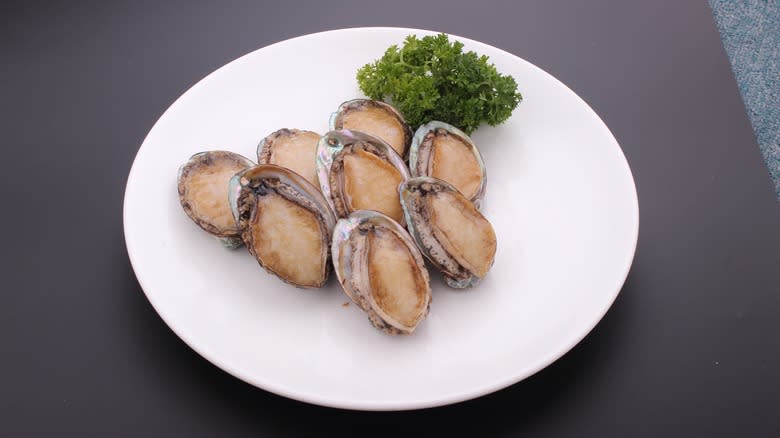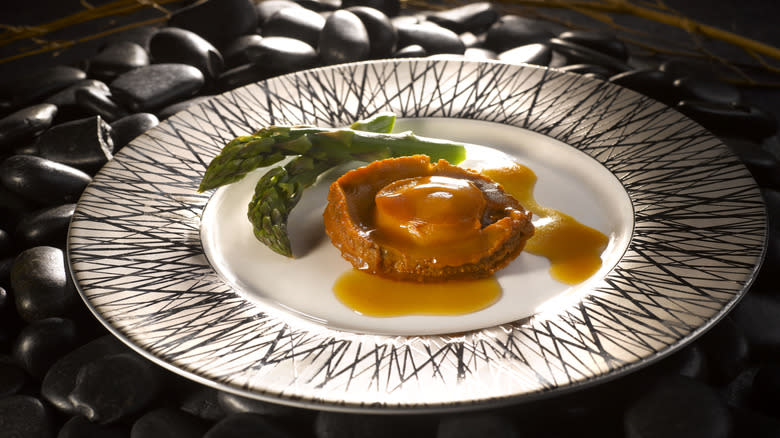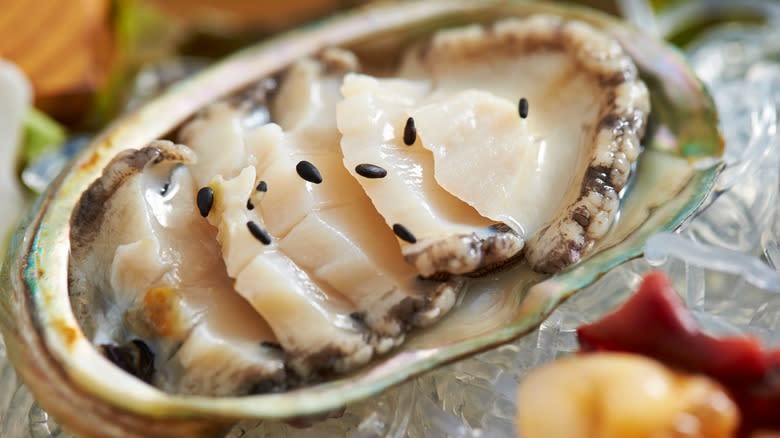Does Fresh Abalone Need To Be Cooked Before Eating?

Abalone is the most expensive shellfish in the world. Today, a pound of wild abalone runs approximately $80, though the price could vary depending on the type and where it comes from. Still, if you're ever in a position to try it, it's worth every bite. This buttery, smooth-tasting shellfish is fairly tender and easy to eat, though larger species will be a bit firmer than smaller ones. Abalone is commonly eaten raw. However, it can be cooked in a variety of ways. All shellfish carry a risk of food poisoning because of how they feed, so you assume a risk when you choose to eat this sea creature uncooked.
Abalone is difficult to harvest, which is what adds to its cost. About 50% of the world's abalone harvest comes from Australia, though you can find it off the coast of California, too. Abalone is typically found in dangerous waters filled with strong currents and potentially threatening sea life, making the process difficult for even the most experienced divers. Several people die each year while hunting for abalone, so if you want to enjoy it, it's not advised that you catch it yourself.
Read more: 13 Tips To Make Your Shrimp Taste So Much Better
Are There Risks To Consuming Raw Abalone?

Assuming you eat abalone that was properly harvested, handled, and stored, the risk of developing food poisoning is minimal. However, according to the CDC, raw shellfish always pose a risk of contamination. Shellfish are filter feeders. They take in organisms from their surrounding environment to survive. As a result, toxins that can be present in shellfish can lead to health issues if consumed. The toxins vary depending on location and climate, but they can lead to symptoms ranging from nausea and vomiting to cognitive problems and even death.
You should only purchase abalone from a trusted source that has properly handled and transported the abalone the right way to avoid bacterial growth. Abalone should always be refrigerated or frozen and should never be stored in the refrigerator for more than two days. Abalone can be frozen for about three months. The safest way to eat abalone will always be cooked. However, as with many other types of seafood, it's not uncommon for it to be eaten raw.
How To Prepare And Eat Raw Abalone

Abalone species come in many sizes, but most abalone available for purchase have a shell length of around 15 centimeters, making them a bit larger than oysters. As with oysters, abalone can be eaten right out of its shell, though larger pieces of meat are often thinly sliced to be more manageable. If you're preparing it yourself, you'll need to pound each slice with a meat tenderizer. This step will soften the meat and make it easier to eat. Be sure to slice off the thin outer portion because it won't tenderize as well.
You can serve raw abalone similarly to how you would serve oysters on the half shell — right in the shell with a little lemon or sea salt for flavor. For a different flavor profile, pair it with a little ginger and soy sauce. Smaller abalone is better eaten raw. Because larger abalone can be firmer, steaming or pan-frying are great ways to tenderize the meat.
Read the original article on Daily Meal

